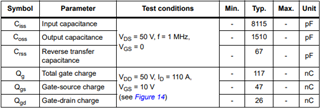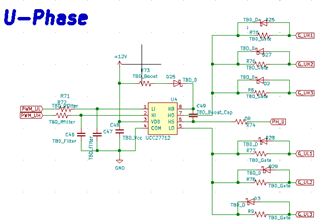Hello Team,
We have come to the Ti part UCC27712dr for Our motor Control application
Want to verify few things Before we procced to design
1)Gate driver capability to Drive the Mosfet's(3 in parallel)
2)Boostrap Diode Voltage rating
3) You recommend to use Zener diode at LO & HO Pin
System Parameter
System Voltage :60V
Vgs: 12V
MOSFET Parameters attached the Image
No of MOSFET Parallel:3
targeting Raise time:500ns
Fsw:20khz
PFA of mosfet Data
And gate Driver Schematic
Thanks



